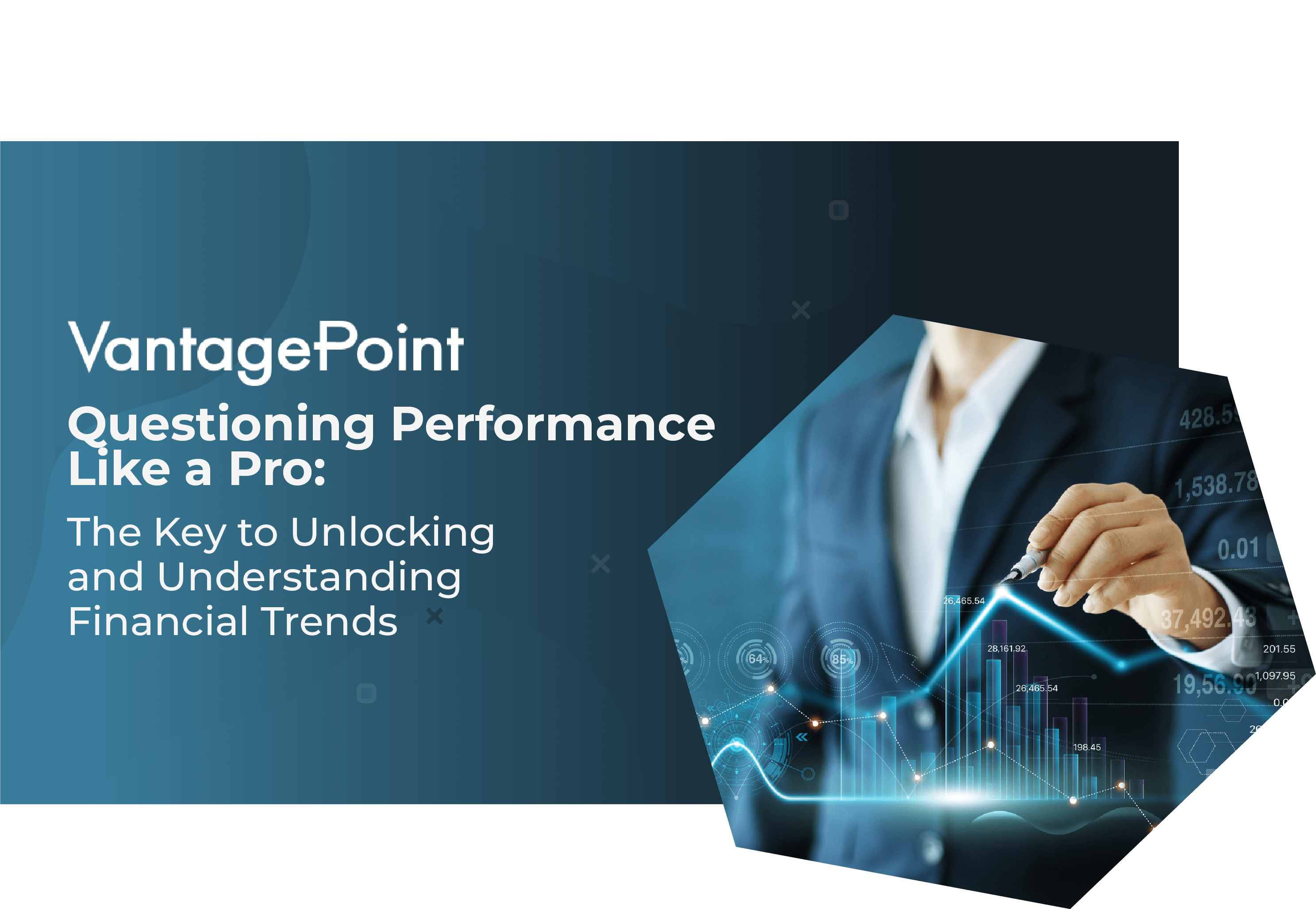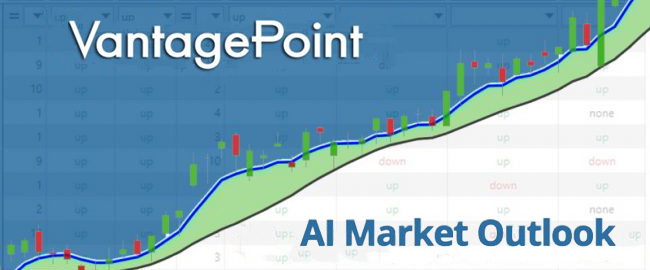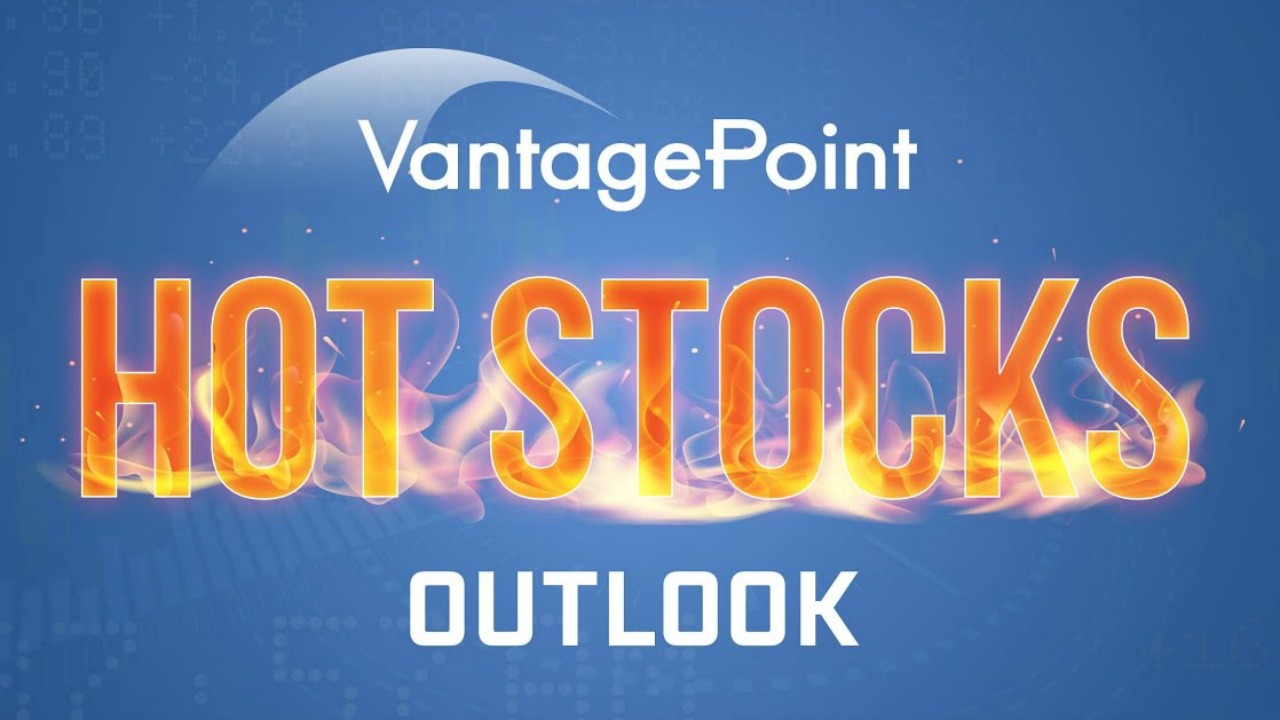Years ago, one of my jobs involved reporting agricultural prices in short radio segments, a seemingly straightforward task that unexpectedly jolted my perspective on trading and market analysis. Tasked with sounding professional, I routinely spiced up my broadcasts with superlatives, buzzwords and excessive adjectives and supposed insights, such as attributing a rise in corn prices to “heavy volume” or a dip in wheat to “weather concerns.” However, this embellishment masked a stark reality: I was as uninformed about the true drivers of these price changes as my listeners. This realization shattered my previous assumptions and set me on a path of profound self-reflection about the financial media’s role in shaping market narratives. Admitting my ignorance became the most humbling and crucial breakthrough of my trading career, prompting me to sift through what really matters in trading from what merely sounds insightful.
The trading arena is an intricate labyrinth of buzzwords, jargon, and an array of credentials and indicators, each promising the golden key to success within their predefined rules. As I delved into these myriad methods, hoping to unlock the secrets of price action and the underlying causes of market trends, I found that most of these tools fell short. They did little to truly illuminate the complex dynamics of trading.
Driven by a desire to cut through the noise, I embarked on a relentless quest, asking hundreds of questions to distill what was genuinely essential. This journey was not without its frustrations; it involved years of navigating through trial and error, each step punctuated by fleeting triumphs and frequent setbacks. But it was through this painstaking process that I reached a pivotal breakthrough — a moment of clarity that fundamentally altered my understanding of the financial markets.
Socrates believed wisdom stems not from knowing all the answers but from questioning deeply to expose ignorance and refine knowledge. Questions are vital because they challenge preconceived notions, foster critical thinking, and lead to deeper insights. From this process, we learn intellectual curiosity, and the importance of reasoning over assumptions. Intelligent questions are those that reveal underlying truths or inconsistencies, often emerging from genuine curiosity and a desire for clarity. This process is crucial as it cultivates a mindset of inquiry, enabling us to navigate complexity, seek truth, and make well-founded decisions.
My epiphany didn’t emerge from mastering another set of sophisticated tools or earning yet another credential. Instead, it came from a deep introspection and a willingness to acknowledge the limits of conventional wisdom in trading. By embracing the complexity of markets without falling prey to the false certainty offered by many trading systems, I learned to navigate the markets with a nuanced perspective that prioritizes clear, evidence-based analysis over everything else.
Let me explain further how this revelation has reshaped my approach to trading and how it might illuminate your path as well.
As I further navigated through the trading world, I imagined the market’s performance segmented into four distinct buckets.
The first bucket showed an impressive gain of +25%, the second a modest +5%, the third a slight loss of -3%, and the fourth a significant drop of -15%. This visualization led me to ask: What is it that the first bucket is doing right? While this question was a good starting point, it soon became clear that it didn’t quite hit the mark.
In the trading arena, certain benchmarks dictate performance standards. For example, broad stock market indexes like the S&P 500, the Nasdaq, the Dow, and the Russell 2000 provide clear metrics. If one aims to track the performance of these indexes, one can simply invest in ETFs that mimic them closely. However, what I came to realize was the importance of identifying what is currently outperforming if one wishes to outperform.
This insight shifted my entire perspective on market analysis. By focusing instead on what is currently outperforming, I aligned myself with the winners in real time. This approach doesn’t just chase after potential winners based on predictive models; it identifies the leaders based on actual performance. If you want to outperform you need to know what is outperforming.
From there, the crucial question becomes: Will these prevailing trends continue?
If you were genuinely interested in outperforming, my very first assignment to you would be to look back over the past year and show me what is outperforming.
This simple and practical method can be applied to any sector, currency, commodity or crypto. The foundation of trading wisdom is knowing what is STRONG and what is WEAK.
The way that I focus on winners is to keep a real time performance grid which monitors how the top assets are performing across multiple time frames. By simply studying these winners, certain trends become evident. From that perspective I then dig in to genuinely understand what are the true defining factors that are responsible for these monster trends.
Let me explain.
Here are the top performing markets and their performance year to date from January 1, 2024. As you look at them, trust the questions that immediately arise when you study this report card. Were you aware of these trends?
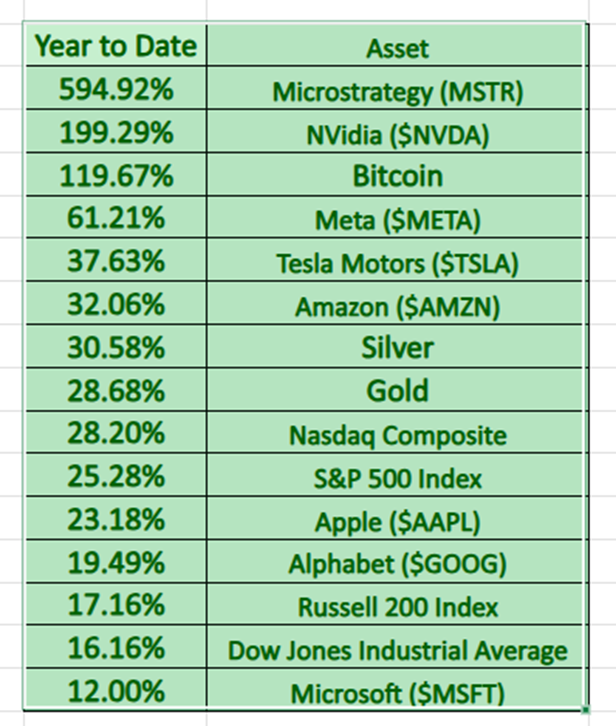
What do you notice?
For me the questions that I asked are:
What is going on with MicroStrategy?
What is going on with Bitcoin?
What is going on with Nvidia?
Why are Gold and Silver outperforming the broader stock market indexes?
But by simply being aware of what is strong and weak the embryo of a narrative is forming that I find very valuable.
I consider the S&P 500 performance to be the equator, and I choose to focus on assets and trends that are north of the equator. Otherwise, I could just buy an ETF that mimics the performance of the S&P 500.
As a matter of fact, Vantagepoint A.I. founder, Louis B. Mendelsohn wrote a great trading book back in 2018 titled Supercharged Trading with Artificial Intelligence. In that book Mendelsohn focuses on applying A.I., particularly deep machine learning neural networks, to intermarket analysis in financial trading. He discusses companies like Nvidia as leading the A.I. field and worthy of your attention. The point that I’m making is that often times these massive supertrends become OBVIOUS when you measure the rest of the market against them. Nvidia has been a top performer using this methodology for over 7 years.
Next, I can use tools like artificial intelligence to dig deeper and locate opportunities within these trends.
If the next year resembles the last 52 weeks will these trends prevail moving forward?
By looking at and focusing on what is performing I am aware of WHERE the money is being made. While this may sound obvious, it is not.
Here is the same performance grid looking back 6 months.
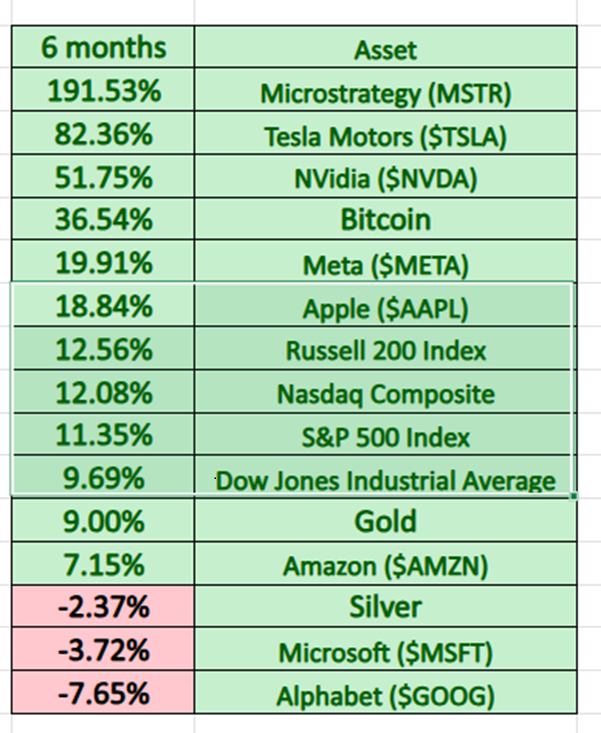
Trust the questions that arise and be willing to investigate further.
Who is leading the pack?
I find it fascinating that once again we have MicroStrategy, Bitcoin, and Nvidia leading the field. This 6-month analysis had Tesla slip into the leaderboard.
Why are they leading the pack?
Who is trailing the field?
Why are they trailing the field?
The idea and overriding perspective here is to become aware of what is strong and what is weak.
Let’s continue to apply this same logic and study the performance of these same assets since the Presidential election:
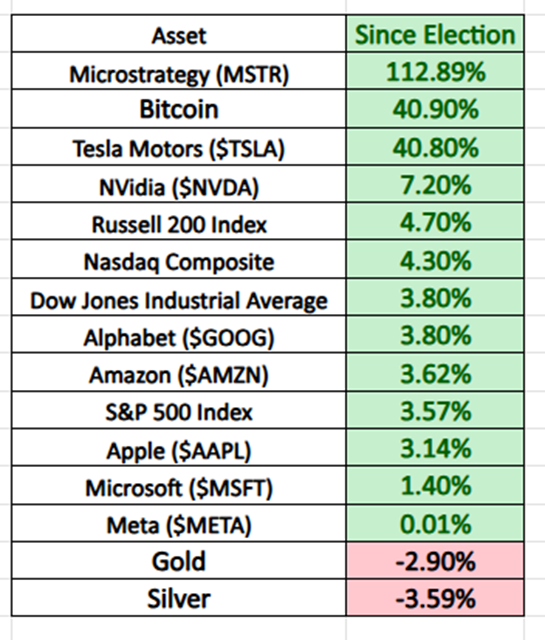
Once again, the usual suspects lead the field. MicroStrategy, Bitcoin, Tesla, and Nvidia.
So, on a short, intermediate, and long term time basis the same assets were massively outperforming the broader stock market indexes.
To outperform the market, you must first focus on identifying what is already outperforming it. The simple principle that “winners keep on winning” serves as a foundation for my approach — not as an invitation to chase past performance blindly, but as a signal to investigate further. By zeroing in on the strongest-performing assets, you can use tools like artificial intelligence to analyze these trends, uncover patterns, and refine your decision-making. A.I. allows you to filter out noise, assess the sustainability of trends, and manage risk and volatility more effectively, enabling you to align your strategy with assets that demonstrate consistent strength and potential for continued growth.
Let me show you some charts that will highlight how powerful this method can be.
Here is the VantagePoint A.I. recent forecast for Bitcoin:
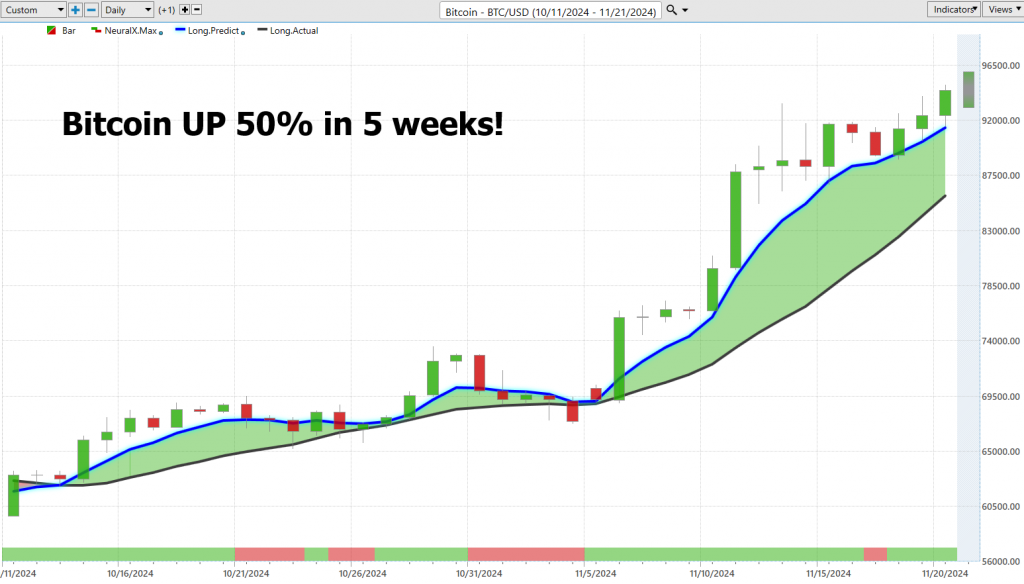
Here is the most recent A.I. predictive forecast on MicroStrategy ($MSTR)
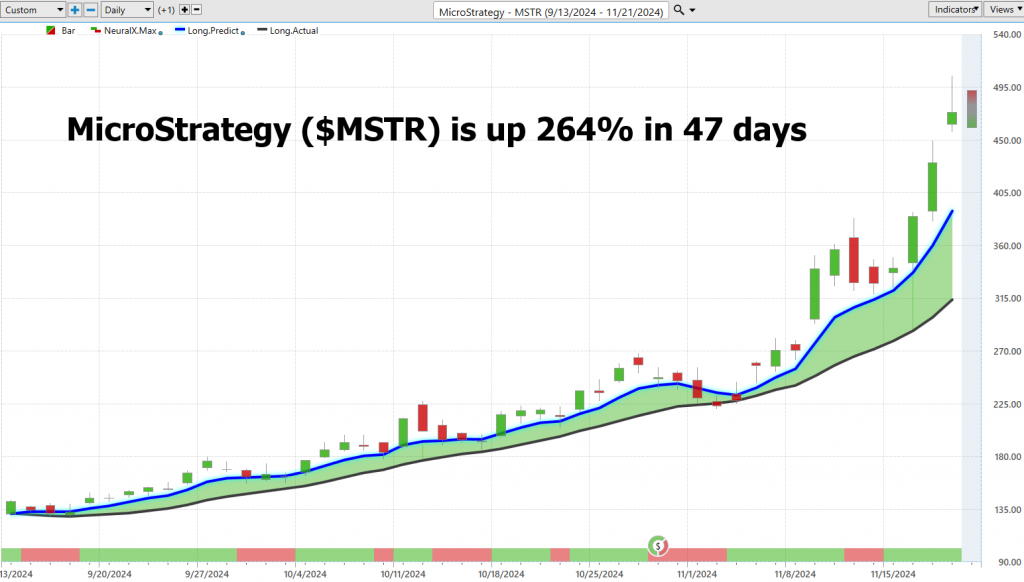
Below is the VantagePoint A.I. forecast on Tesla ($TSLA):
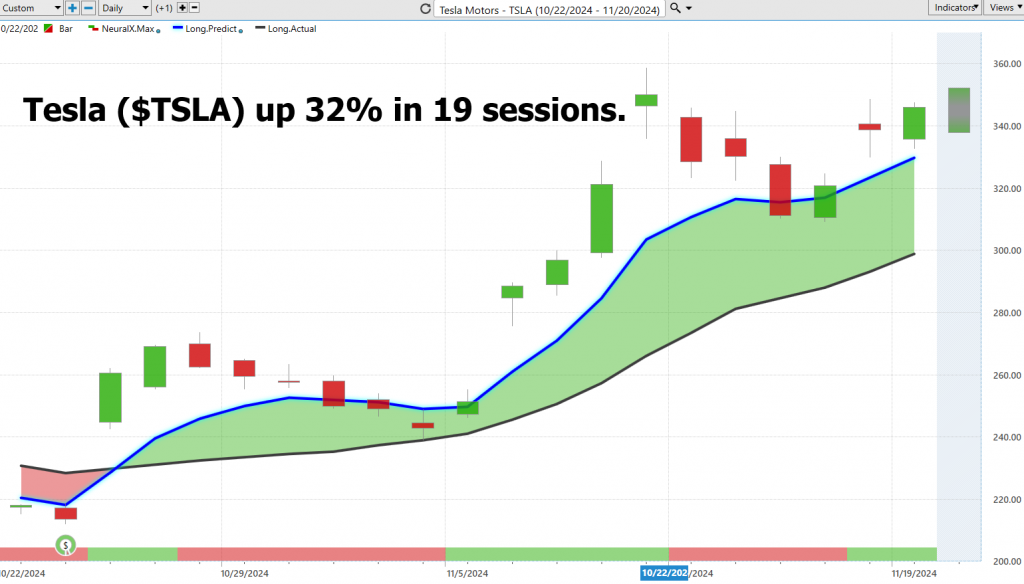
Lastly here is the A.I. predictive forecast on Nvidia ($NVDA)
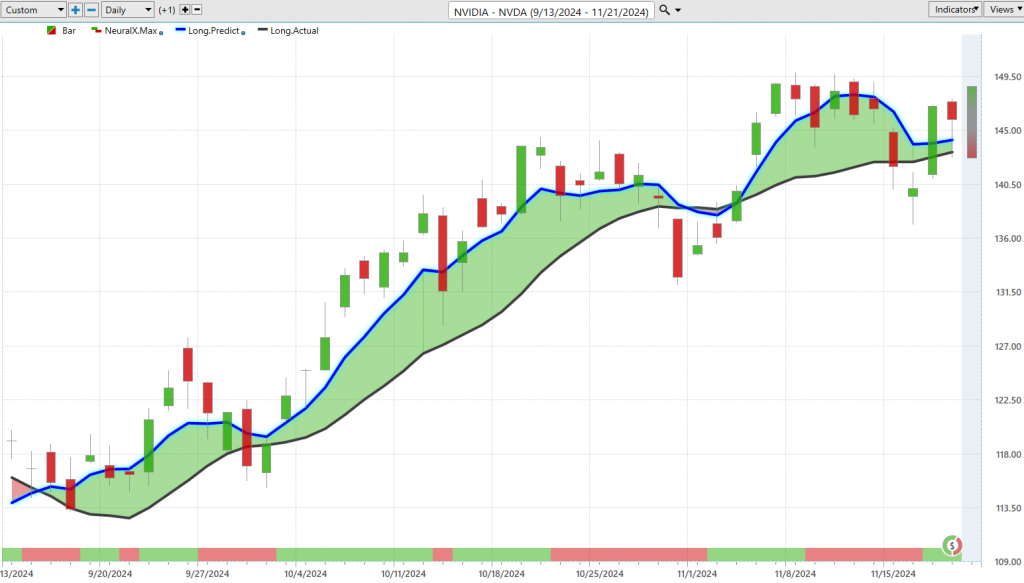
The takeaway here is simple, be aware of what is outperforming and then apply artificial intelligence to analyze those trends so that you can achieve outsized returns. Massive supertrends are happening that can be life changing. Are you aware of them? Are you participating in these monster trends? Why not?
The Future of Trading is Here – Join Our Free A.I. Masterclass and See It in Action!
Let me ask you something: if artificial intelligence can beat the world’s best at Chess, Poker, Go, and even Jeopardy, do you really think the financial markets are any different?
A.I. is revolutionizing trading just as it’s transforming every other industry. In our
FREE Learn to Trade with Artificial Intelligence Masterclass, you’ll see for yourself how A.I. works in real time—spotting trends, analyzing data, and pinpointing opportunities faster than any human ever could.
This isn’t theory. This is the future of trading unfolding before your eyes. If you’re serious about staying ahead of the curve and thriving in the markets, this is your opportunity.
Seats are limited, so act fast. Click here to claim your spot and see the power of A.I. in action. Your competition won’t wait — why should you?
THERE IS A SUBSTANTIAL RISK OF LOSS ASSOCIATED WITH TRADING. ONLY RISK CAPITAL SHOULD BE USED TO TRADE. TRADING STOCKS, FUTURES, OPTIONS, FOREX, AND ETFs IS NOT SUITABLE FOR EVERYONE.IMPORTANT NOTICE!
DISCLAIMER: STOCKS, FUTURES, OPTIONS, ETFs AND CURRENCY TRADING ALL HAVE LARGE POTENTIAL REWARDS, BUT THEY ALSO HAVE LARGE POTENTIAL RISK. YOU MUST BE AWARE OF THE RISKS AND BE WILLING TO ACCEPT THEM IN ORDER TO INVEST IN THESE MARKETS. DON’T TRADE WITH MONEY YOU CAN’T AFFORD TO LOSE. THIS ARTICLE AND WEBSITE IS NEITHER A SOLICITATION NOR AN OFFER TO BUY/SELL FUTURES, OPTIONS, STOCKS, OR CURRENCIES. NO REPRESENTATION IS BEING MADE THAT ANY ACCOUNT WILL OR IS LIKELY TO ACHIEVE PROFITS OR LOSSES SIMILAR TO THOSE DISCUSSED ON THIS ARTICLE OR WEBSITE. THE PAST PERFORMANCE OF ANY TRADING SYSTEM OR METHODOLOGY IS NOT NECESSARILY INDICATIVE OF FUTURE RESULTS. CFTC RULE 4.41 – HYPOTHETICAL OR SIMULATED PERFORMANCE RESULTS HAVE CERTAIN LIMITATIONS. UNLIKE AN ACTUAL PERFORMANCE RECORD, SIMULATED RESULTS DO NOT REPRESENT ACTUAL TRADING. ALSO, SINCE THE TRADES HAVE NOT BEEN EXECUTED, THE RESULTS MAY HAVE UNDER-OR-OVER COMPENSATED FOR THE IMPACT, IF ANY, OF CERTAIN MARKET FACTORS, SUCH AS LACK OF LIQUIDITY. SIMULATED TRADING PROGRAMS IN GENERAL ARE ALSO SUBJECT TO THE FACT THAT THEY ARE DESIGNED WITH THE BENEFIT OF HINDSIGHT. NO REPRESENTATION IS BEING MADE THAT ANY ACCOUNT WILL OR IS LIKELY TO ACHIEVE PROFIT OR LOSSES SIMILAR TO THOSE SHOWN.





